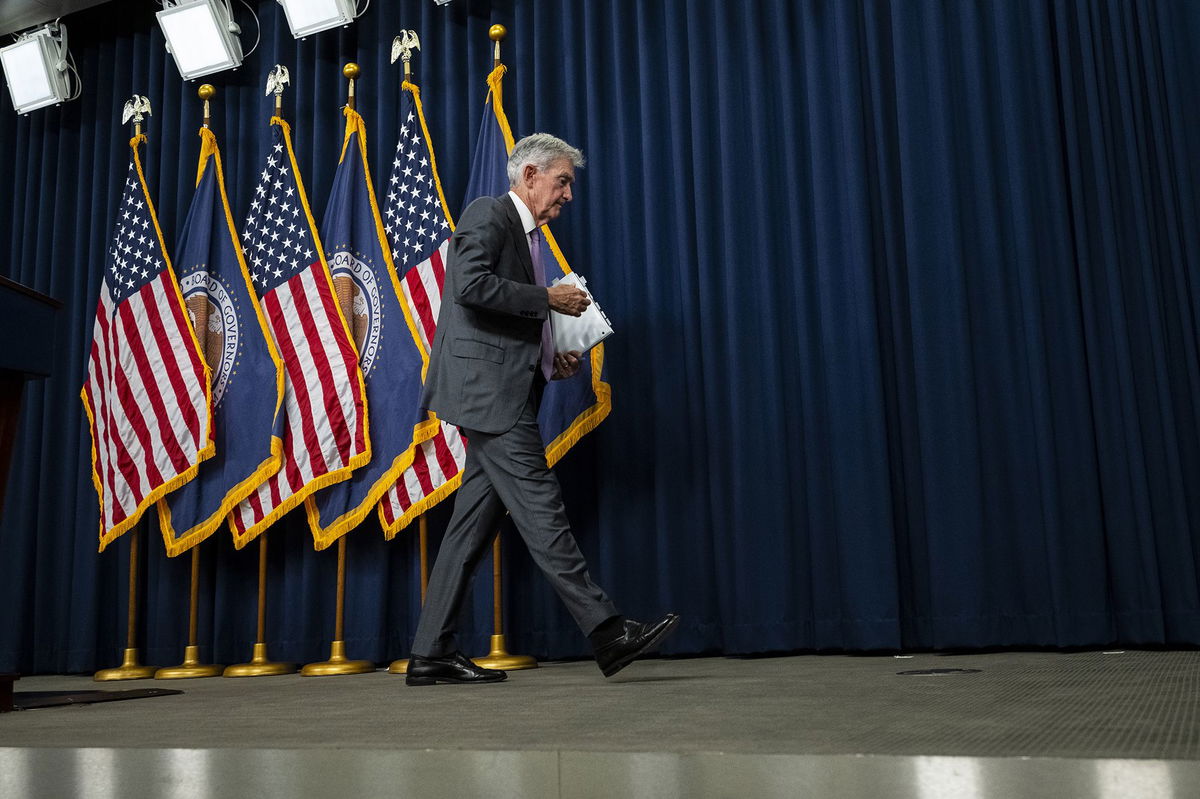The Fed just announced a jumbo-sized interest rate cut

Originally Published: 18 SEP 24 05:00 ET
Updated: 18 SEP 24 14:15 ET
By Bryan Mena, CNN
Washington (CNN) — The Federal Reserve slashed interest rates aggressively Wednesday, announcing the first rate cut since March 2020.
The bold, but not unexpected, half-point move paves the way for lower borrowing costs on everything from mortgages to credit cards.
It marks a crucial milestone for the central bank’s historic inflation fight, which kept rates at a bruising 23-year high for more than a year.
The decision to cut by half a point, which wasn’t unanimous, telegraphs to the world that central bankers feel a sense of urgency to provide the US economy with swift relief from elevated borrowing costs, considering there were blaring calls in recent days for the Fed to kick off the rate-cutting cycle with a bang.
Fed Governor Michelle Bowman, who has frequently expressed worries about lingering price pressures, was the lone dissenter, backing a quarter-point cut instead.
Fed officials also penciled in more rate cuts by year’s end in their latest economic forecasts, compared to the single cut in 2024 that they projected in June. Central bankers also expect unemployment to rise higher this year to 4.4%, up from the current rate of 4.2% as of August.
Despite the Fed’s aggressive action on Wednesday, the central bank’s inflation battle, in the face of immense pressure from Wall Street and politicians, seems to be paying off so far: Inflation is substantially below the 40-year highs seen in the summer of 2022 — all without a recession. The momentous progress seen since then isn’t solely due to higher interest rates, but also because of the US economy’s gradual recovery from severe pandemic disruptions.
The Fed has indeed walked a fine line in taming price pressures without sacrificing America’s job market, an extremely difficult task because rate hikes function by deliberately cooling the economy. That tool wielded by the Fed is typically described as a sledgehammer, not a scalpel.
Still, despite inflation receding, jitters remain, mostly centered around the job market’s future now, rather than the possibility of inflation getting stuck or reigniting. That’s precisely why some called for the Fed to start cutting rates aggressively. The unemployment rate ratcheted up relatively quickly over the past year, though from an unusually low point. Economists have widely said that whenever unemployment begins to rise, it tends to catch momentum and keep rising.
That has put into jeopardy a possible soft landing for the US economy — a scenario in which inflation is tamed without a sharp increase in unemployment. Such an outcome has only happened once in modern history, in the mid-1990s, so the Fed is within reach of a historic achievement.
Is the Fed playing catch-up?
The Fed faced pressure to start cutting rates in July, but did not.
Some investors and economists pointed to rising unemployment and how the job market can sometimes take a turn for the worse on a dime. The central bank was still waiting for enough evidence that inflation had come under control, but Fed Chair Jerome Powell had said a weakening job market could speed up the timing of the first rate cut.
The pace of the job market’s slowdown seems to have done the trick. But it also begs the question: Should the Fed have cut rates in July? Clearly, some investors believe the Fed is behind the curve and the decision to cut rates by half a point fueled that fire even more. It’s a tricky predicament for the Fed, and even the fact that the decision wasn’t unanimous casts even more doubt over the soundness of the Fed’s decision-making.
“When will investors think the Fed is ahead of the curve and proactively exercising its ‘put’? This is the most important question because investors have been implicitly asking that — and hoping for this outcome — all summer long,” Jason Draho, head of asset allocation, CIO Americas, at UBS Financial Services, said in a recent analyst note. He added that the Fed’s commitment to extending the US economy’s expansion with so-called “insurance cuts” to prevent a recession is key for investors’ confidence.
This story is developing and will be updated.
The-CNN-Wire
™ & © 2024 Cable News Network, Inc., a Warner Bros. Discovery Company. All rights reserved.